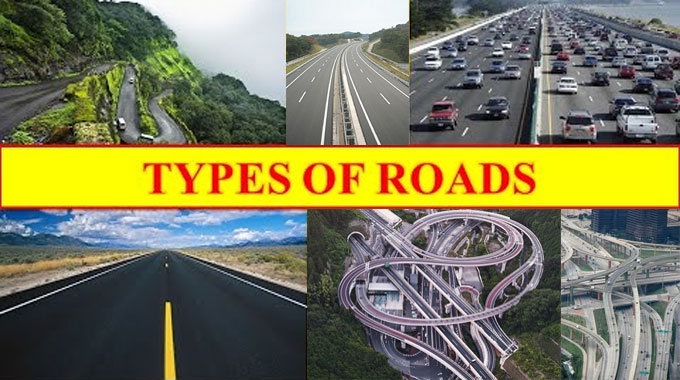
Types of Roads and Their Details
The road is a cleared way or a course or an avenue which drives you to arrive at your goal through vehicles. Roads are arranged dependent on various measures, each among them is additionally characterized into various kinds of roads. In this post, we give a short depiction of every single kind and terms which you as often as possible listen to when somebody discusses roads.
Roads are principally classified as follows:
1. Characterization dependent on Speed and openness
2. Characterization dependent on Construction materials utilized
3. Characterization dependent on use
4. Characterization dependent on Carriageway
5. Characterization dependent on Rigidity
6. Characterization dependent on Topography
7. Characterization dependent on Economy
8. Characterization dependent on traffic volume
Ordering dependent on traffic type
Out of the above, Road characterization dependent on speed and openness and dependent on materials utilized is the most significant. In view of Speed and openness, they are:
Freeways
Freeways are likewise called access-controlled highways. Freeways are wide roads intended for quick moving vehicles to travel significant distances with higher paces. These are commonly structured in four paths, two paths toward every path.
Traffic development on freeways is ceaseless and unhindered in light of the fact that there are no railroad or road crossing points and no signs.
As referenced above, get to is controlled wherever in this sort of roads the driver never interacts with the contradicting stream of traffic. To isolate traffic from different roads Freeways are gotten to just through inclines. Extensions or underpasses are developed to make a section for roads which cross freeways.
Parking and Walking are carefully precluded on freeways and they don't have pathways on either side of roads. The base speed breaking point and greatest speed limit differs from the nation by nation and it ranges between 45mph to 75mph.
Expressways
Expressways are one of the predominant sorts of access-controlled roadways where the section and exit of the interstate are completely constrained by inclines. As the name itself "express" resounding that these are intended for a free progression of very speed traffic.
Expressways are intended to travel rapidly with incredible solace and security by maintaining a strategic distance from sharp bends, occupied traffic crossing points, railroad intersections.
Vehicles with high speeding are just allowed on expressways. Overwhelming burden vehicles, load vehicles, people on foot are not permitted. Parking, stacking and emptying are carefully restricted on Expressways.
Highways
Highways associate towns to urban areas or urban areas to urban areas or state to state or the roads interface the state cash-flow to the national capital are called highways. Highways are the roads gone through the length and broadness of the nation.
They are commonly laid in two paths. Highways are additionally arranged into National Highways, State Highways, Urban Highways and Rural Highways. We will talk about these sorts in area and capacity classification.
Arterials
Arterials are the roads laid inside the city or town for the development of high volume of traffic. An arterial road joins the focal business point to the outside neighborhoods. Arterials give access to the highways.
People on foot are permitted to go across the roads just at convergences or at assigned person on foot intersections. The progression of traffic is constrained by a flagging framework at convergences. Parking isn't permitted on arterial roads.
Local Streets
Local streets don't convey a huge volume of traffic like arterials. As far as possible is limited to 30km/hr in a local street. Local streets permit you to properties around it. In basic the road which you take to arrive at the closest vegetable market is the local street.
People on foot can go across the road anytime in local streets. Unlimited parking, stacking and emptying of vehicles are permitted in local streets. They as a rule don't have any divider with rocks however isolated with 1m dabbed white lines or straight white lines.
Collector Roads
Collector roads gather and convey the traffic to and from local streets and arterials. As far as possible typically runs between 35-55km/hr. People on foot are permitted to cross just at convergences. Parking can be permitted with the exception of at top occasions.


